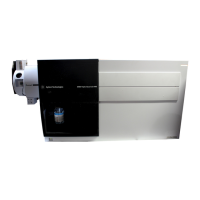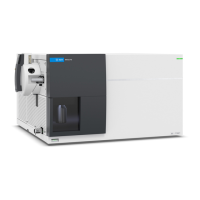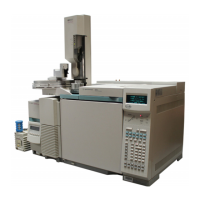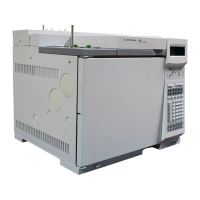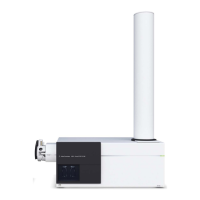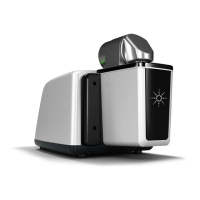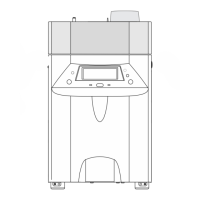Inner Workings – Triple Quadrupole MS versus Single Quadrupole MS 2
How Triggered Dynamic MRM works
Agilent 6400 Series Triple Quad LC/MS Concepts Guide 37
• For sulfachloropyridazine, if the abundance of the primary
trigger transition (285 m/z -> 197 m/z) is greater than 800 at
scan 80, then because the Trigger Entrance Delay is 2,
secondary transitions are acquired starting at scan 83. Only
the primary transitions are acquired at scan 81 and scan 82.
• For sulfadimethoxine, if the abundance of the primary
trigger transition (311.1 m/z -> 245.1 m/z) is greater than
1000 at scan 200, then because the Trigger Delay is 1, the
secondary transitions are acquired at scan 201, scan 203, and
scan 205. Only the primary transitions are acquired at scan
202 and scan 204.
• For sulfamethazine, if the abundance of the first primary
trigger transition (279.1 m/z -> 186 m/z) is greater than 900
counts and the abundance of the second primary trigger
transition (279.1 m/z -> 155.9 m/z) is greater than 1000
counts and the retention time is between 0.6 minutes and 1.0
minutes (the Trigger Window), then the secondary
transitions are acquired. The Trigger Window is set to a
narrower range than the Peak Retention Time window.
• For sulfamethizole, all three trigger conditions are set. So, if
the abundance of the primary trigger transition (285 m/z ->
197 m/z) is greater than 1100 (the threshold) at scan 60 and
the retention time for scan 60 is within the Trigger Window,
then because of the Trigger Entrance Delay is 2, the
secondary transitions are not acquired for the next two scans
(scan 61 and scan 62). Because of the Trigger Delay is 1, the
secondary ions are acquired at scan 63, scan 65 and scan 67.
One scan is skipped after each time you acquire the
secondary ion; only the primary transitions are acquired at
scan 64 and scan 66. If any of these scans are outside of the
Trigger Window, then the secondary transitions are not
acquired for those scans.

